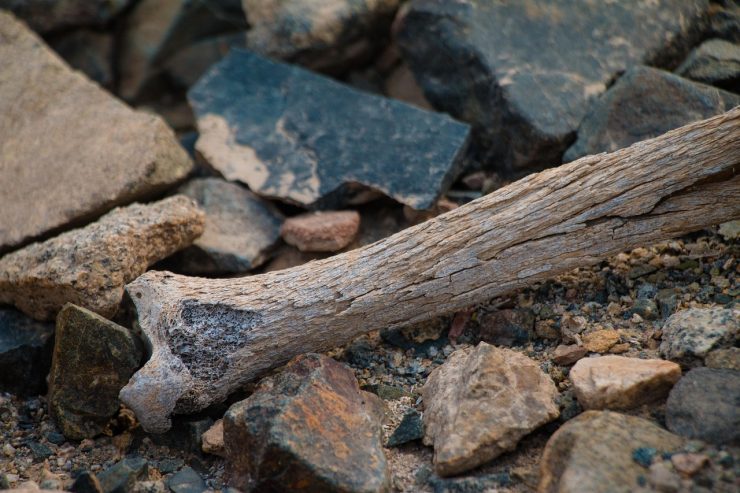Are you at a higher risk for bone fractures? If you’re over 50, the answer is likely yes. You’ve probably heard of osteoporosis, a condition where bones break down faster than they can rebuild, making them fragile and much more susceptible to fractures.
Osteoporosis is often called a silent killer because it tends to develop slowly, without noticeable symptoms, until it’s too late. That’s why preventing it before it becomes a serious issue is key to maintaining long-term health.
Before osteoporosis sets in, there’s a condition called osteopenia, which is essentially low bone density. This means the bones are weaker than they should be, and if not addressed, it can progress to osteoporosis. Osteopenia means “poor bones,” and while it can be reversed with proper care, osteoporosis is much harder to treat.
Prevention is crucial.
How Common Are Osteopenia and Osteoporosis?
In the U.S., an estimated 53.6 million adults have either osteopenia or osteoporosis, making up about 54% of people over 50. Women are more likely to be affected, with Asian and Caucasian women having the highest rates of low bone mass, while African Americans tend to have stronger bones.
Your bones are living tissue, constantly breaking down and rebuilding. They also play a big role in your metabolism, hormone production, blood cell formation, and immune health. That’s why taking care of your bones is essential for longevity, mobility, and overall well-being, especially as you age.
How Do Our Bones Grow and Function?
Your skeleton isn’t just a protective structure—it’s constantly renewing itself. Through a process called remodeling, old, brittle bone tissue is broken down and replaced with new, stronger tissue. This happens in three phases:
-
Resorption: Old bone is broken down by cells called osteoclasts.
-
Reversal: The surface is prepared for new bone.
-
Formation: New bone is built by osteoblasts.
Regular weight-bearing exercises like strength training or running help stimulate this process, making bones stronger and more resilient.
Your bones also act as a mineral reserve, storing calcium and phosphorus, which are critical for various body functions. When these minerals are low in the blood, the body takes them from the bones, which can weaken them over time, especially as hormone levels fluctuate with age.
The Risk of Osteopenia and Osteoporosis
Both conditions usually go unnoticed until a bone breaks. And fractures—especially in the hip, spine, or wrist—can lead to severe complications, including limited mobility, chronic pain, and even life-threatening issues in older adults. Did you know that 20% of seniors who break a hip die within a year?
Some common signs of osteoporosis include:
-
Fractures, especially in the hips, spine, or wrists
-
Limited mobility
-
Bone pain
-
Loss of height (over an inch)
-
A stooped posture, or “dowager’s hump” from weakened spine bones
What Causes Osteopenia and Osteoporosis?
There are many factors that contribute to low bone mass, including:
-
Being female
-
Having a small frame or low body weight
-
Lack of physical activity
-
Poor diet, especially high in processed foods and sugar
-
Smoking
-
Low levels of estrogen or testosterone
-
Chronic inflammation
-
Certain medications
In addition, conditions like diabetes, autoimmune diseases, and some cancers can also lead to bone loss.
Diagnosing Bone Density
Early diagnosis is crucial since preventing bone loss is far easier than trying to reverse it. A bone mineral density (BMD) test, often with a DEXA scan, is the standard method of checking bone health. Blood and urine tests may also help detect early signs of bone loss.
Conventional Treatment for Osteoporosis
Doctors usually treat osteoporosis with medications like bisphosphonates, which help slow the breakdown of bone. However, these medications can have serious side effects, including stomach ulcers, bone pain, and even jawbone death. Plus, while they may reduce the risk of spine fractures, they don’t do as much for hip or leg fractures, which are often more severe.
Natural Treatments for Bone Health
The best way to prevent osteoporosis is through proper nutrition, exercise, and lifestyle changes. Here are some tips:
-
Get Regular Bone Density Tests: Start screening at age 40 to catch issues early.
-
Exercise: Weight-bearing activities, like walking, running, and strength training, help keep bones strong.
-
Eat a Balanced Diet: Focus on fresh vegetables, lean proteins, and healthy fats.
-
Focus on Anti-Inflammatory Foods: Avoid processed foods, sugar, and omega-6 oils, which can worsen bone loss.
-
Ensure Adequate Vitamin D, K2, Magnesium, and Calcium: These nutrients are essential for bone health, but be mindful of calcium—too much can be harmful. Opt for a well-rounded diet instead of relying on supplements.
Lifestyle Tips for Stronger Bones
-
Avoid Smoking: Smoking accelerates bone loss.
-
Limit Processed Foods: These can contribute to inflammation, which weakens bones.
-
Check for Inflammation: Work with your doctor to monitor inflammation levels, as chronic inflammation can lead to bone loss.
-
Prioritize Strength Training: This helps stress the bones in a healthy way and promotes growth.
Maintaining strong bones isn’t just about preventing fractures—it’s about living a longer, healthier life with greater mobility. So, keep an eye on your bone health and take proactive steps to protect it.











